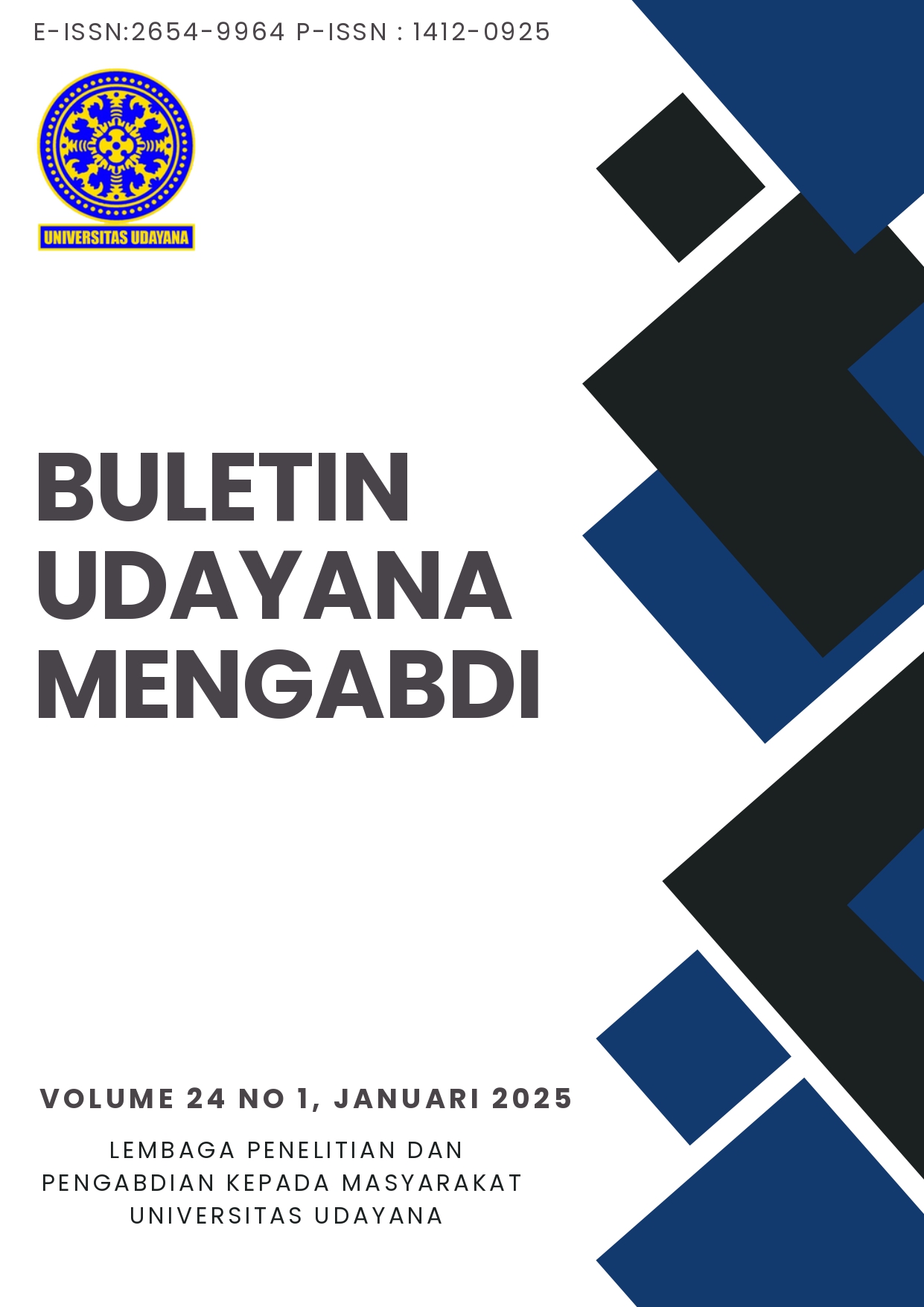PERANCANGAN FASILITAS WISATA SPIRITUAL BERBASIS PELESTARIAN BUDAYA
Abstract
Pedawa Village, as one of the indigenous Bali Mula villages located in Banjar District, Buleleng Regency which has been designated as one of the new tourist destination villages in Buleleng Regency. The village is developing itself as a viable tourist destination. Spiritual tourism design is one type of tourism facility that is planned in the tourist village master plan in Pedawa Village. The planned spiritual tourism facilities are facilities that are able to accommodate all spiritual activities such as: meditation, healing/healing, yoga, holy baths (melukat), religious rituals during traditional ceremonies/prayer, learning about the cultural and historical traditions of Pedawa village such as traditional dances; folk games; language; culinary; and sacred offerings. Through planning this spiritual tourism facility, Pedawa village will be ready to become a tourist village and accept tourists who will participate in spiritual tourism. Comprehensive field observations and interviews are used to obtain accurate data that will be used as a basis for planning. The result shows that design drawing is in the form of a site plan of spiritual tourism facilities, as well as details of the design of each main and supporting building that is planned to be the basis for the development of this area. This facility planning is also in an effort to optimize local culture as the basis of tourism development and at the same time conserve local wisdom in Pedawa village.
Keywords: culture, Pedawa, conservation, spiritual, tourism.
Downloads
References
Diandra, N. Muhammad N.A, Muhammad O.S, 2020, Tinjauan rumah tinggal berdasarkan konsep rumah sehat menurut regulasi pemerintah, Jurnal Ilmiah Teknologi dan Desain Institut Sains dan Teknologi Pradita, Volume 1 No.2, Januari 2020, 45-54.
Emet Gurel, Merba Tat, 2017, SWOT analysis: a theoretical review, The Journal of International Social Research, Vol.10 Issue: 51.
Farzaneh Soflaei, Mehdi Shokouhianb, Wenyi Zhuc, 2016, Socio-environmental sustainability in traditional courtyard houses of Iran and China. Renewable and Sustainable Energy Reviews.
Fernandez-Guell, Jose M. Collado, Marta, 2014, Foresight in designing sun-beach destinations, Tourism Management, Vol.41, pp- 83-95.
LaGro, J. A, 2008, Site analysis: A contextual approach to sustainable land planning and site design (2nd ed.). Hoboken, NJ: Wiley.
Leiber, T., Stensaker, B. & Harvey, L, 2018, European Journal of Higher Education 8(3), pp. 351-365. Bridging theory and practice of impact evaluation of quality management in higher education institutions: a SWOT analysis.
McBride, Steven B, 2019, Site planning and design, Web Book of Regional Science, West Virginia University.
Nabavi. F, Yahaya. A, Ai T , 2012, Daylight and opening in traditional houses in Yazd, Iran. PLEA2012 - 28th Conference, Opportunities, Limits & Needs Towards an environmentally responsible architecture Lima, Perú 7-9 November 2012.
Nur Rahmawati Syamsiyah, Sentagi Sosetya Utami, Atyanto Dharoko, 2015, Rancangan arsitektur berkelanjutan melalui metode soundscape. Seminar Nasional Sains dan Teknologi 2015 Fakultas Teknik Universitas Muhammadiyah Jakarta, 17 November 2015.
Prajnawrdhi, T.A Paramadhyaksa I.N, Mahastuti N.M, Satria M.W, Aritama A.A.N, 2021, Konsep penataan Pura Dalem Kayehan Desa di Desa Pedawa yang tanggap pandemi Covid 19, Proseding SAMARTA, Program Studi Arsitektur Universitas Udayana.
Prajnawrdhi, T.A, 2018, Toward a sustainable tourist development site: case study Pedawa village, Bali, ICATUS International Conference, Udayana University Bali.
Prajnawrdhi, T.A, 2020, Kayehan Desa Sebagai salah satu destinasi wisata: sebuah disain awal pemanfaatan potensi yang dimiliki Desa Pedawa, Kecamatan Banjar, Kabupaten Buleleng, Prosiding Seminar SEMADI.
Puyt, Richard W., Lie, Fin B., Frank J De Graf., Celeste D, M Wilderom, 2020, The origin of SWOT Analysis, Academy of Management Proceeding. Vol 2020. No.1
Robert G. Dyson, 2004, Strategic development and SWOT analysis at the University of Warwick. European Journal of Operational Research Vol. 152, pp.631–640.

This work is licensed under a Creative Commons Attribution-ShareAlike 4.0 International License.

This work is licensed under a Creative Commons Attribution-ShareAlike 4.0 International License.




.png)


1.png) GARUDA - GARBA RUJUKAN DIGITAL
GARUDA - GARBA RUJUKAN DIGITAL



